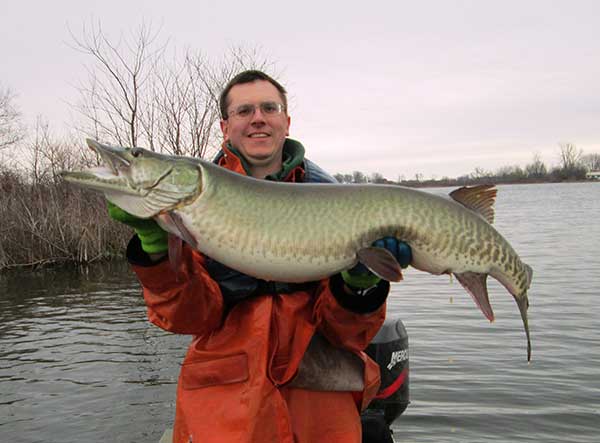- Details
The computer system that the state uses to sell Indiana hunting and fishing licenses will shut down from 7 a.m. to 10 p.m. on Saturday, June 15, for maintenance.
People will be unable to buy hunting or fishing licenses on this day. The shutdown affects all forms of license sales, including authorized license retailers and online purchasing through the DNR website.
Anyone in need of a license for that day is encouraged to buy one in advance.
Before the shutdown, licenses will be available for purchase online at IndianaOutdoor.IN.gov, or in person at the DNR Customer Service Center or one of the many authorized license retailers throughout the state.
The DNR Customer Service Center is at 402 W. Washington St., Room W160 Indianapolis. Hours are 8:30 a.m. to 4:30 p.m., Monday through Friday. The service centers phone number is (317) 232-4200.
- Details
Anglers fishing Indiana waters can affix up to three hooks, three artificial lures, or a combination of hooks or lures not to exceed three per pole under a temporary rule that takes effect May 24.
The long-standing permanent rule allowed just two hooks per pole. Other changes in the temporary rule define artificial lure, bait, fly, hook, pole and line.
These changes were needed to clarify Indianas fishing regulations so that everyone can more easily determine what fishing tackle can be used, said DNR director Cameron Clark. New devices are always coming onto the market and in the past, it has not always been clear if they were permissible.
- Details
(Provided by Indiana DNR)
Growth of Eurasian watermilfoil, a non-native, invasive aquatic plant, poses a threat to recreation at Waubee Lake in Kosciusko County.
However, DNR officials say more watermilfoil is not necessarily bad given the scarcity of other, native plants in the 187-acre lake.
Based on sampling by DNR fisheries biologists, coverage of Eurasian watermilfoil in Waubee Lake has increased five-fold since 2010. It is now the second most abundant plant, up from ninth in 2010. Where present, it is also denser than in 2010.
- Details
(Provided by Indiana DNR)
Private landowners looking to improve wildlife habitat on their property may qualify for financial assistance through the DNR Division of Fish & Wildlife, particularly if they want to benefit bobwhite quail and ring-neck pheasants.
Bobwhite quail and ring-neck pheasant are prized game birds. However, populations of both have suffered from permanent habitat loss or lack of maintenance on existing habitat.
- Details
(Provided by the Indiana DNR)
 Biologist Tom Bacula with 48-inch muskie from Bruce Lake.The DNR muskie stocking program at Bruce Lake has resulted in some impressive fish, according to biologists.
Biologist Tom Bacula with 48-inch muskie from Bruce Lake.The DNR muskie stocking program at Bruce Lake has resulted in some impressive fish, according to biologists.
Bruce Lake is a 245-acre natural lake on the Pulaski-Fulton county line, 7 miles east of Winamac. The DNR has stocked muskies annually at Bruce since 2000 and monitors muskie populations periodically to gauge success.
In mid-April, fisheries biologists from the DNR Division of Fish & Wildlife used trap nets to assess the muskie population in the lake.
During the week-long survey, biologists caught and released 90 muskies, including several spectacular fish. Most were between 36 and 40 inches.
I was very impressed with the catch we had from Bruce Lake this year, said Tom Bacula, DNR fisheries biologist. We collected 20 muskies over 40 inches. The largest was a 48-inch, 32-pound female.


